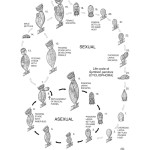
If you wondered yesterday why we’re collecting gorgonian samples (as well as fish, shrimp, crabs, algae, and sponges) for the Saba Conservation Foundation, this 6m anchor scar on the Saba Bank should help to explain. We’re collecting biological samples in order to document the biodiversity of the Saba Bank, and by doing so, we’re helping our partners to win protection from oil tanker’s anchors.
The Saba Bank is on enormous shallow offshore platform (60km x 40km) west across the channel from Saba Island in the Netherlands Antilles. Saba bank has been called the world’s third largest submerged atoll. It’s covers more area than the islands of St. Maarten, St. Eustatius, and Saba put together.
The problem is, tankers drop their anchors while waiting to approach the port in St Eustatius, and it’s causing serious damage to the coral reefs and their associated habitats. In order to regulate the damage, the Dutch Ministry of the Environment is preparing a Particularly Sensitive Sea Area (PSSA) application for the International Maritime Organization with the help of NOAA and Conservation International, among others.
The ROV on the left is a Seabotix model, depth rated to 220m. It’s about 18 inches long. The cinder block is tied to a buoy to help mark the coordinates of the scar.






That hurts my heart. Why can’t they (oil co.s and govt) construct permanent anchor sites a la dive spots? I know tankers are not dive boats but surely they could sink some kind of strong, permanent anchor site.
These oil tankers are enormous. In rough weather, I doubt a mooring could hold them in place. Even if they did, the anchor chain would sweep back and forth along the bottom.
The Dutch believe the best alternative is to petition the International Maritime Organization (IMO) for no-anchor zones that cover part or all of the Saba Bank. They need support from other countries to help put this issue on the IMO agenda.